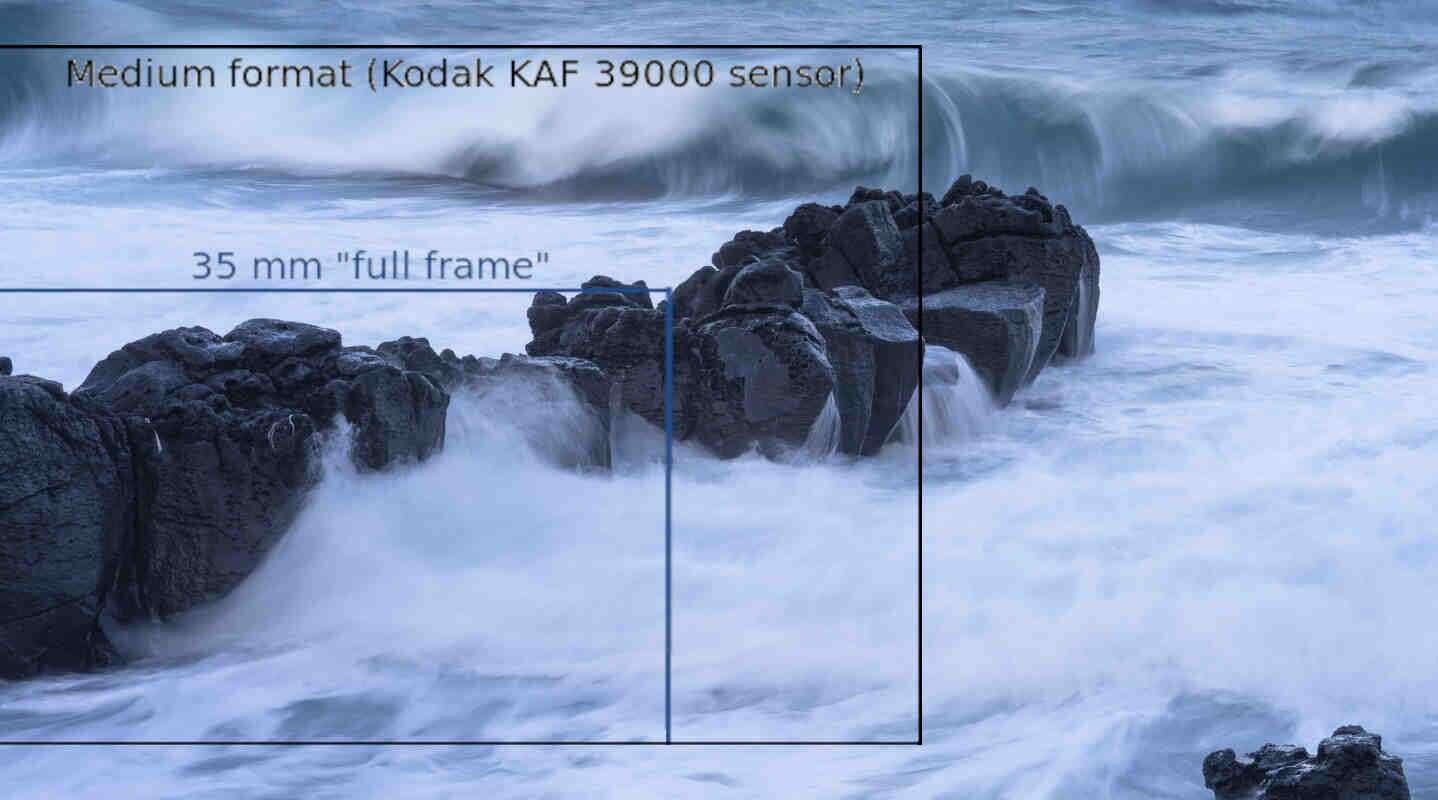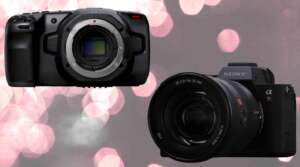Full frame cameras pack a 35-mm film equivalent digital sensor inside them with 36 x 24 mm dimensions. Full-frame is the standard in photography for comparing crop factors of different types of sensors. Medium format cameras, on the other hand, equip a larger sensor size compared to a 35mm full-frame digital sensor. Any camera that features a sensor larger than the 36×24 mm and smaller than 100×130 mm is a medium format camera. A larger sensor has its own added benefits, and disadvantages. There are no best cameras that will perform best in any given condition. Finding a camera is all about finding that one solution that fits your need. Let’s compare full frame vs medium format cameras in detail to have a better understanding of how sensor-size affects your photos.
Full Frame vs Medium Format Cameras
Sensor Size
As discussed earlier, the size of a medium format sensor is larger than a full-frame sensor. As a result, medium format sensors can gather more light than full-frame sensors when exposed for the same duration of time. This provides more room for the photographer to play with shutter speed, aperture, and ISO. A medium format sensor also features a wonderful aspect ratio with a distinctive look that many photographers greatly admire.
The larger frame size in medium format camera can be very useful in product photography, or fashion photography. You can also use the larger frame to crop out unwanted details and yet attain a quality picture. However, the larger size of the sensor makes its body larger, and hard to carry around. Note that medium format cameras are way more expensive than full-frame cameras.
The smaller sensor size will not be an issue for you if you are a regular or casual photographer. The autofocus in the medium format cameras is very slow compared to the high-speed AF technologies in full-frame cameras. This can aid you very well while you are shooting fast-action scenes like action or sports.
Pixels
A larger sensor directly implies more pixels. An increase in the number of pixels however doesn’t always add up to image quality. The actual discussion point is about the size of an individual pixel. If a full-frame and medium format sensor feature the same number of pixels, then the pixels on the medium format sensor will be larger. The larger medium format allows manufacturers to add more pixels, but also increase the pixel size.
An increased pixel size gathers more light and a higher number of pixels produce a sharper image. Hasselblad X1D II 50C is a high-end medium format camera. It is an example of how the larger sensor size is utilized for better low light performance without compensating on the sharpness of the image. In the full-frame camera segment, Sony a7S III is a very good example of what larger pixels can achieve in low light photography.
If you are a person who shoots in low light frequently and wants a powerful autofocus feature, then full-frame models like the Sony a7S III will be one of your nice options. Things may change in the near future with medium format cameras.
Crop Factor | Full Frame vs Medium Format Cameras
Crop factor (or focal length multiplier) is the measure of how similar a sensor can produce the image compared to that of a full-frame sensor. It affects the field of view of the lens when attached to a camera. Crop factor or focal length multiplier is the ratio of the diagonal length of a sensor to that of the reference sensor.
The crop factor of a 35 mm sensor is 1x, as the reference sensor is a 35 mm sensor itself. The usual medium format sensors used in photography is 43.8 x 32.9 mm, like Hasselblad X1D II 50C 50MP. This medium format camera has a crop factor of 0.82x. If we are to mount a 100mm lens in a full-frame camera, the same field of view could be attained in a Hasselblad X1D II with an 82mm lens (100mm x 0.82x = 82 mm).
If you are switching from a full-frame to medium format or vice-versa, there will be a significant change in the way you perceive a scene with respect to the camera view angle. Don’t forget to use the compensated focal lengths to shoot your photos in case you switch. It might take some time to get familiar with both. Take out your camera, and practice.
Color Reproduction and Tonal Contrast
Color reproduction is the ability of a camera to reproduce the colors as seen with the real eye of an observer. This is a crucial aspect as machines don’t perceive light as we see it. Medium format cameras have an exceptional color reproduction ability. Hence, they are widely used in the fashion or advertisement industry. Even the modern hybrid full-frame cameras are also capable to produce a nice color reproduction, but not as good as medium format cameras.
Tonal contrast is the difference between pure black and pure white in an image. A human eye can detect up to 20 stops of this dynamic range. Back in the days, medium format cameras boasted a dynamic range of up to 15 stops which full frame cameras at that time couldn’t achieve. However, things are changing now as technology is progressing rapidly. Now, full-frame cameras are also capable of providing up to 15+ stops of dynamic range.
Continuous Shooting Speed | Full Frame vs Medium Format Cameras
The larger sensor size in medium format cameras limits the shutter speed and the burst speed of the camera. A high-end medium format camera like Hasselblad H6D-50c features only a 2.3fps burst speed. Modern full-frame cameras like Sony a9 II on the other hand support a whopping 20fps continuous shooting speed. This feature lets you capture very fast actions rather than giving you a blurred picture. You have to make sure that you stay away from a medium format camera if you are an action, sports, or animal photographer.
Medium formats and full-frame formats are different altogether and one camera cannot be the master of all. Even though we have discussed all crucial aspects of both cameras, medium format cameras still fall short when it comes to lens range and other accessory options for the camera. It is a very expensive way to go. Unlike medium formats, full-frame cameras have a wide range of lenses and accessories in the market.
Overall Winner | Full Frame vs Medium Format Cameras
Full Frame Cameras: Modern full frame mirrorless cameras in the market offer far better value for money than medium format cameras.
Here are some examples of amazing mirrorless cameras you may go for:
| Mirrorless Camer Model | Reason to choose |
|---|---|
| Canon R5 | (Best & the only 8K mirrorless camera) |
| Sony a7S III | (Best mirrorless camera for low light video shooting) |
| Sony a9 II | (Best action-photography camera) |




